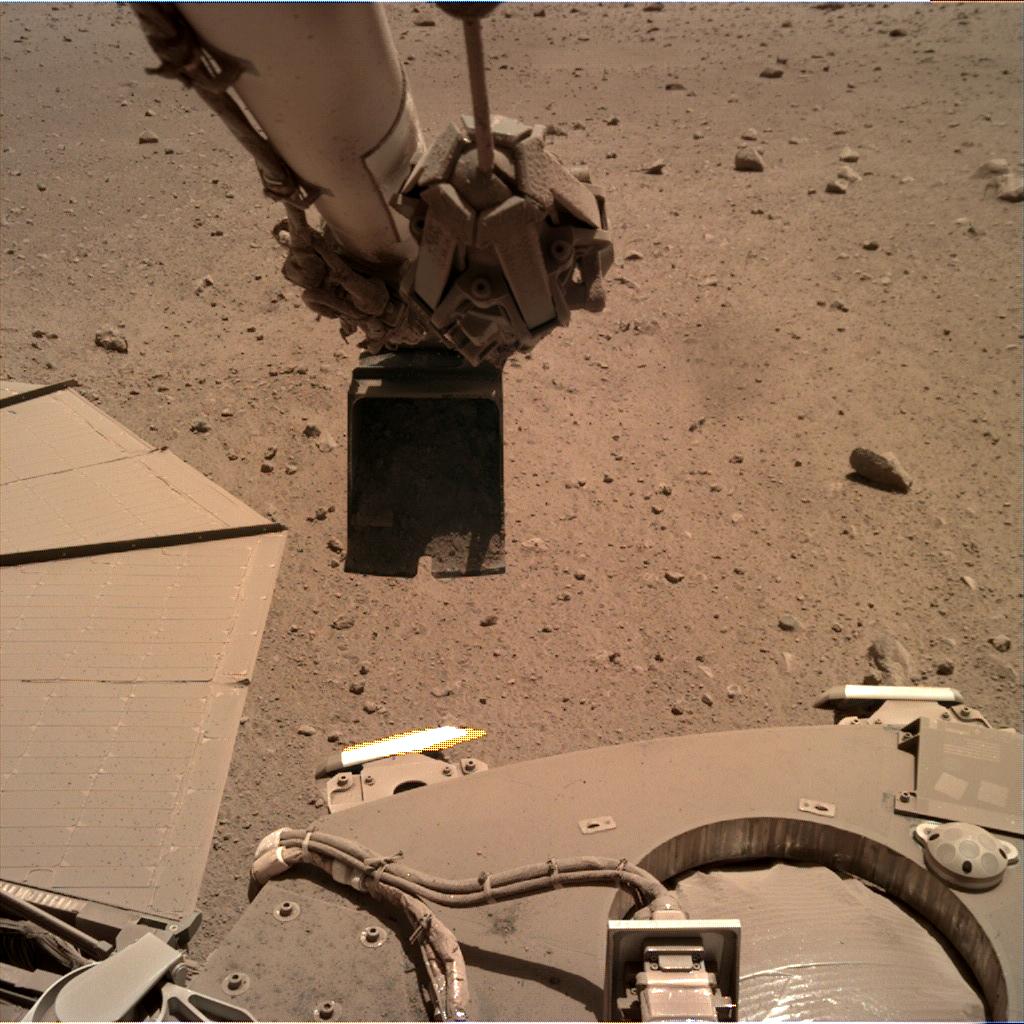Ever have an idea that was so crazy that it just might work? A few weeks ago, members of the InSight Mars team came up with a crazy, counter-intuitive way to try to get dust off the lander's solar panels: pour more dust on the panels.
Yes, that sounds crazy. But yes, it actually worked!
"I've been wanting to tell people why we were burying ourselves in dirt for a little while now," said InSight project scientist Mark Panning on Twitter. "Short answer: people like Matt Golombek, Mariah Baker, Ralph Lorenz and others convinced our engineers that we could get dust off the panels by adding sand. That sounds crazy! But dumping a pile of dirt so that the wind would carry sand grains onto the panel lets sand grains bounce across the panel and kick off dust."
?s=20Loading tweet...
— View on Twitter
This clever trick boosted InSight's energy production by about 5%, gaining about 30 watt-hours of energy per sol, or Martian day. The team repeated the process over this past weekend, hoping to gain even more power.
"That isn't huge, but we're squeezing everything we can out of each Watt-hour of energy," Panning added. "It lets us keep gathering as much data as we can as we move to aphelion where solar energy is low and heating needs are high."
Aphelion is where Mars is at its farthest point from the Sun. That means less sunlight reaches the spacecraft's dust-covered solar panels, reducing their energy output. Martian dust has been a nemesis for not only InSight, but for previous Martian craft on the surface, such as the Opportunity rover, which ran out of power back in 2018.
The InSight team has been hoping a dust devil might clear dust off the panels, as happened for the Spirit and Opportunity Mars rovers. Alas, no such luck, and so the team took matters into their own hands, ….er, robotic arm.
InSight's team timed the crazy maneuver for the windiest part of the day, hoping the larger sand grains blowing around would carry the smaller dust particles off the surface of the panels. Sure enough, with winds blowing northwest at a maximum of 20 feet (6 meters) per second, the trickling of sand coincided with an instantaneous bump in the spacecraft's overall power, NASA said.
"We weren't sure this would work, but we're delighted that it did," Golombek said in a press release.
It has long been known that the Martian dust has electrostatic "sticky" tendencies – making it stick on the solar panels of all rovers and landers. The idea for "using more dust to create less dust" came when the previously mentioned team members and Constantinos Charalambous saw a similar effect when they used InSight's robotic arm to drop soil over the seismometer's tether to better insulate it. They saw dust was blowing downwind after dumps to bury the tether.
?s=20Loading tweet...
— View on Twitter
InSight's panels have outlasted the two-year prime mission they were designed for and are now powering the spacecraft through the two-year extension. NASA says that relying on solar panels for power enables such missions to be as light as possible for launch and requires fewer moving parts – thus, fewer potential failure points – than other systems. Equipping the spacecraft with brushes or fans to clear off dust would add weight and failure points.
NASA noted how some members of the public have suggested using the Ingenuity Mars Helicopter's whirring blades to clear off InSight's panels, but that's not an option, either: The operation would be too risky, and the helicopter is roughly 2,145 miles, or 3,452 kilometers, away.
 Universe Today
Universe Today

